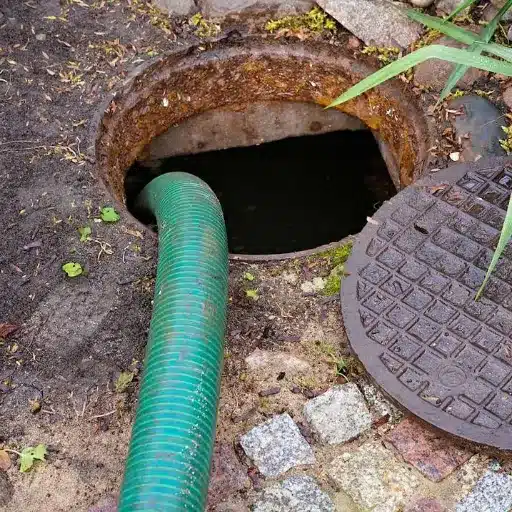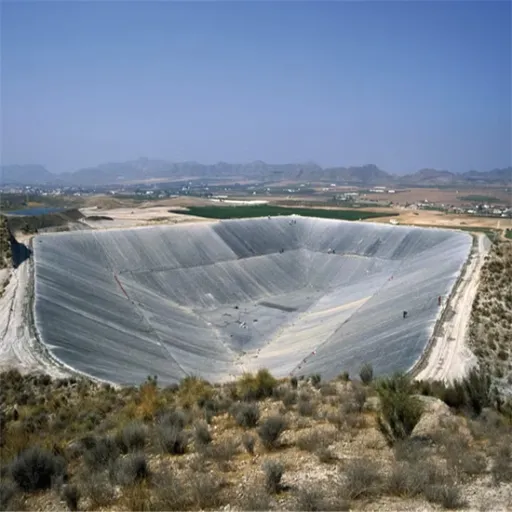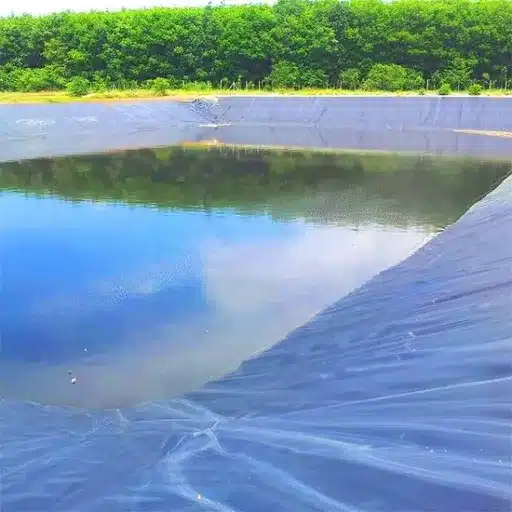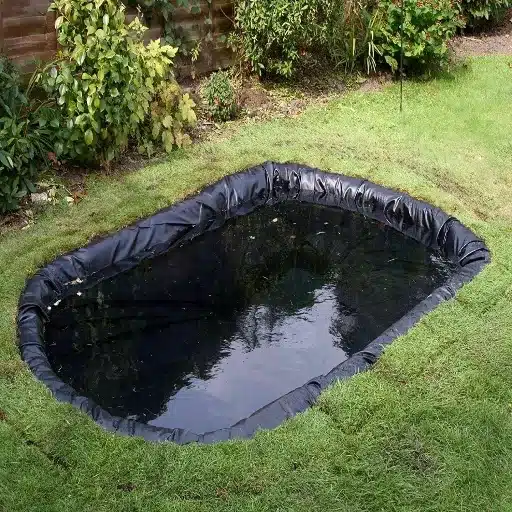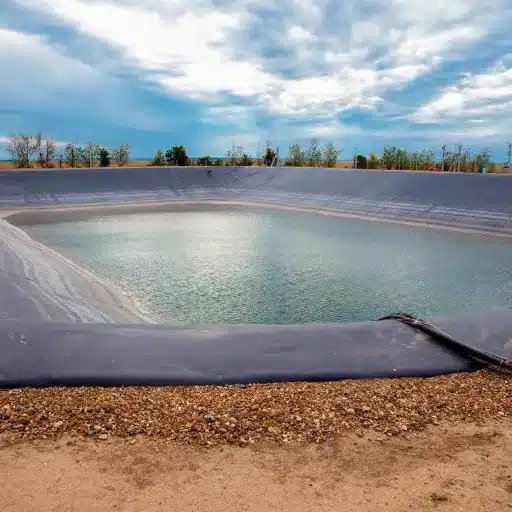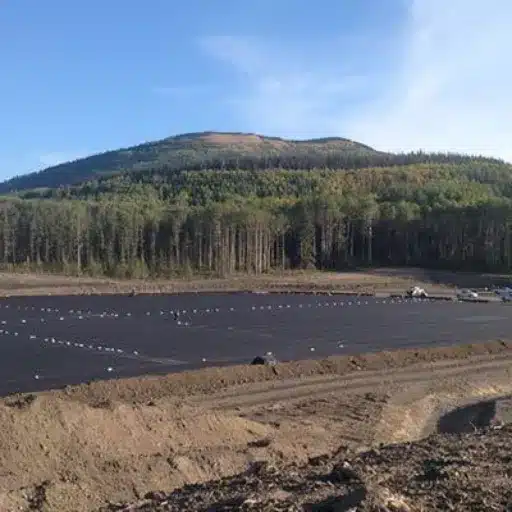Maintaining sanitary practices and managing waste systems is crucial for sustaining the health and life of communities and the environment. This piece goes into somewhat detailed explanations regarding three well-known waste management methods: septic tank desludging, latrine sanitation, and pond dredging. There are diverse influences these processes exert on human health, mainly by positively preventing contamination, while also serving as environmental conservation measures in a sustainable manner. While dealing with the significance, methods, and advantages of these three, this manual orients itself toward providing practical solutions for homeowners, communities, and organizations. It can introduce someone to the subject or provide practical tips, equipping them with information needed to make wise decisions regarding waste management and sanitation.
Understanding Desluding
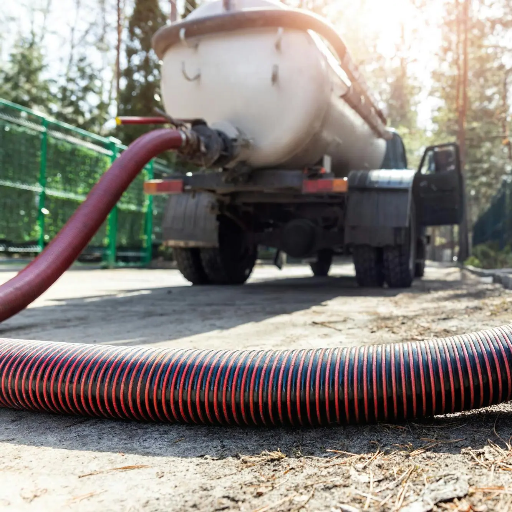
The act of desludging entails the removal of sludge accumulated at the bottom of septic tanks or similar abatement systems. To preserve the merits and operational efficiency of the system, it must be ascertained that desludging is done so as to prevent stoppages or pollution in the surrounding habitat. Regular desludging, particularly every 3-5 years as per the degree of its utilization, makes the treatment efficient, thereby reducing any risk of overflow or failure.
In simple terms, what is Desludging?
Desludging is an essential maintenance activity that involves the extraction of solid waste, also termed sludge, which accumulates at the bottom of the septic tanks or some pit latrines, or other forms of on-site sanitation systems over time. Mostly, this sludge comprises organic waste, fats, and other insoluble in water substances, which settle out in the chemical and biological treatment processes of the wastewater. In the absence of maintenance, heavy build-up of sludge might cause an ineffectiveness of the system, bad smells, blockages, and in some way pollute the water resources within their environment.
The latest figures show the importance of regular desludging to ensure the efficient functioning of sanitation systems. The reported study of sanitation experts states that the average septic tank must be desludged every 3 years up to 5 years but the actual frequency depends on the number of people in the house, the amount of water that they use, and the type of waste that enters the system. For instance, if a family of four implements the use of a regular 1,000-gallon septic tank, the desludging should be closer to every three years. A failure to uphold this regular maintenance program may result in the stoppage of the systems, additional costs for repair, or may pose some sort of health risk due to overflow of untreated wastes.
In recent times, the various types of desludging methods have become much faster, using mechanical equipment to pump out and transport sludge safely for further treatment and disposal. In addition, with increasing consciousness of environmental issues, this sludge has since been tried to be put to further uses as a possible biofertilizer or conversion to biogas, thus providing an added dimension. The implementation of regular desludging schemes and the conscious use of septic systems go a long way to ensure that waste management is done in an eco-friendly, durable, and hygienic manner.
Importance of Desludging
Desludging plays a major role in rendering the septic system viable and hygienic. If, for any reason, septic tanks go without desludging for some periods, it is putrefaction, and solid wastes begin accumulating, decreasing its capacity, and efficiency. This can cause blockages, offensive odors, contamination of groundwater, and eventual breakdown of the sewage system, from where costly repairs or replacements follow. Studies state that a homeowner can schedule yearly septic tank desludging with a considerable retention of 3-5 years, which could change with variations such as the number of people residing in the household or daily water consumption.
According to the latest data, it is predicted that a growing market shall be created for septic tank cleaning services worldwide, driven largely by increased awareness about environmental health and advances in waste management technology. Further, statistics indicate that they may reduce, by as much as 35%, the risk of groundwater pollution by properly performed desludging, thus conserving the surrounding ecosphere and their water supply. These new technologies, together with sensors to measure sludge levels, give an opportunity for more accurate monitoring and handlebars to instigate desludging when required, thus keeping overflow at bay and prolonging the life of the system.
Promotion of such regular desludging practices ensures the sustainability of the local ecosystem while also allowing septic systems to work optimally. Utilization of the sludge into viable by-products like biogas and biofertilizers contributes in creating a circular economy for the household or community that limits waste and realizes maximum resource efficiency. This represents one of the reasons on both the environmental and economic fronts that laud the argument for properly managed wastewater through regular desludging.
Key Terms and Their Meaning
Septic System: A waste disposal structure usually seen in rural or suburban areas that do not have centralized sewer systems. It generally comprises a septic tank and a drain field that facilitates the decomposition of organic matter and the separation of solids and liquids in waste.
Desludging: Process of getting rid of sludge or solid waste that eventually accumulates in large quantities at the bottom of septic tanks. Regular desludging is necessary to prevent clogging and clogging and may focus on system failure. Maintenance usually occurs every 3-5 years depending on tank capacity or household use.
Sludge: Semisolid residues and other wastes generated during wastewater treatment that settle in a septic tank. Excessive sludge, if neglected, could result in sludge overflow and irreparably damage the septic system, thus exposing great environmental dangers.
Biogas: Renewable energy produced during the anaerobic digestion of organic matter such as sludge. It contains methane that can be used for cooking, heating, and electricity generation. According to recent research, a family should be capable of producing an estimated daily biogas yield of nearly 1 cubic meter from sludge that is ample for a basic household energy requirement.
Biofertilizer: Nutrient-rich material produced through treated sewage sludge. If well processed, biofertilizers can serve as an alternative to chemical fertilizers and a catalyst for restoring soil health and support to agriculture. Data from recent studies, for example, reveals that sludge-type fertilizers improve crop yields by up to 20%.
Circular Economy: An economic system that seeks to reduce waste by way of reuse, recycling, and sustainable resource management. By turning waste products like sludge into energy and fertilizers, households and communities too have a role to play in promoting the circular economy.
With this, it has shown how the maintenance of septic systems is tied directly to resource recovery, which further invokes sustainable development activities as an attitude in itself, not to forget the technical and best management practices focus in wastewater handling.
Septic Tank Desludging
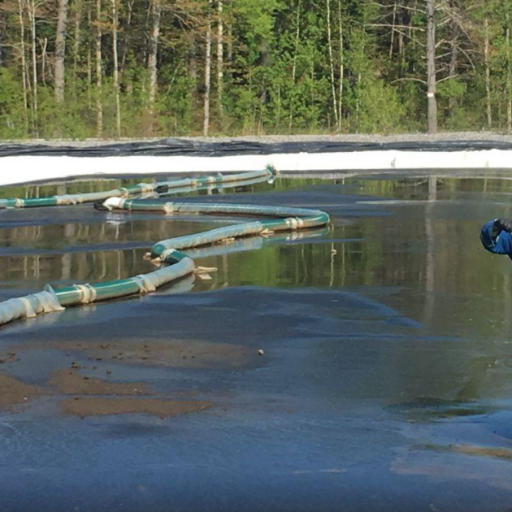
The desludging of the septic tank is essential so that the tank may not get blocked and so that the system will not fail, causing harm to the environment. The chamber will receive an accumulation of solid waste over a period, and thus its capacity and efficiency will be diminished. Regular desludging ensures proper wastewater treatment and protects groundwater and the local environment. A tank should be serviced every 3 to 5 years for the average household, with the application being dictated by use and tank size.
When to Empty a Septic Tank
One of the major factors influencing a decision on when to empty a septic tank would be solid accumulation rates. These tend to be influenced by family size, tank volume, and water consumption habits; research suggests that a normal four-member family using a 1,000-gallon capacity septic tank should attend to emptying the tank roughly between 3 and 5 years. Larger families or those that utilize water excessively may, however, need servicing much more often.
Other signs for cleaning include slow drainage, gurgling sounds in the plumbing system, and foul odors from the sewage close to either the tank or the drain field. Neglecting to empty in time will result in backup, clogging, or damage to the absorption field, which is expensive to repair. Also, home owners are advised to check annually if the sludge and scum layers exceed safe levels, where the sludge layer can anything but a third of the depth of the tank, according to the EPA.
In addition, an alarm for a septic tank or sensor level will feed real-time data, allowing the owners a more precise estimate of when maintenance is needed to avoid sudden failures. Timely maintenance will again guarantee a long life for the septic system itself, and more than that, will protect local water resources from contamination due to overflow or leakage.
Desludging Best Practices
A de-sludging schedule according to the household should be maintained for optimal tank performance. From recent data, a septic tank requires pumping every three to five years, depending on size and water usage of the household; hence, bigger families producing more waste would require more frequent pumping, whereas smaller households can extend this interval.
Therefore, the EPA notes that if septic tanks are not emptied when required, solids overflow, clogging drain fields and incurring expensive repairs that average between $3,000 and $15,000. Some modern septic systems are equipped with monitoring technology: IoT-enabled level sensors and alarms are being widely used to provide real-time updates concerning sludge and scum level build-up, so that proactive action can be taken.
A reputable septic technician should desludge a septic tank. They will be trained, equipped, and experienced enough to efficiently remove the waste and dispose of it in accordance with local regulations, thus avoiding harm to the environment and health hazards. Therefore, while traditional septic systems configuration can benefit from newer technology, homeowners stand to gain much in terms of cost reduction and conservation of the few environmental resources.
Environmental Issues Faced by Lack of Septic Maintenance
Improper maintenance of systems or neglect to maintain a septic system can throw vast consequences into the environment. Such systems, unmaintained, are implicated in the leakage of untreated wastewater glompering into the earth and polluting nearby water sources. EPA estimates around 10-20% septic systems in the United States do not perform as they should each year and water quality degradation. Nutrients like nitrogen and phosphates released from septic leakage will cause algal blooms in aquatic systems, depleting oxygen and thus inhibiting marine life.
Contaminating the groundwater is also a very serious matter, especially in places where private wells are a common site. According to CDC, contaminants from failing systems such as E. coli, nitrates, and other pathogens can infiltrate drinking water sources, thereby posing a serious risk to public health. Studies also show that Nitrate levels above 10 milligrams per litre in drinking water cause concern, primarily for infant and pregnant women.
Additionally, the detrimental gases like methane released from untreated wastes trigger the greenhouse gas effect, further escalating climate change. Though with the support of awareness, regular septic maintenance regimes may help reduce the adverse environmental and health impacts of failing systems.
Latrine Sanitation
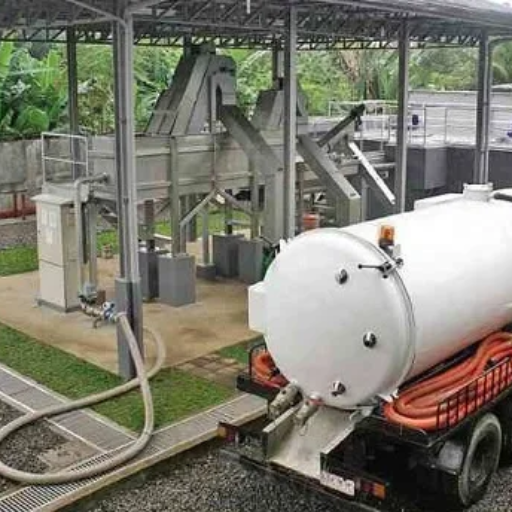
Proper sanitation for human activity assures safely deposing wastes, thereby avoiding the contamination of any water resources downstream and diseases spreading. To maintain or promote hygiene, latrines should be cleaned if used, ventilated to minimize bad smells, and safely emptied when full. Thus, good sanitation aids in protecting public health and preserving environmental resources.
Overview of Latrine Systems
Latrine systems fulfill the primary function of sanitation, especially in and around open defecation-prone areas where modern methods of waste management incompatibly set in. Basically, a latrine earns its fit for collecting and isolating human wastes so that water sources are not contaminated and disease outbreaks are not triggered. A few types of latrine systems exist, with each fitting different geographic, economic, and social contexts.
Pit Latrines – It is among the simple and widely acceptable systems, mostly consisting of a hole dug into the ground that receives wastes. Some pit latrines have slabs or some form of cover for their stability and hygienic levels. According to WHO, an estimated 1.7 billion people use some form of unimproved sanitation system, including a basic pit latrine, showing the urgency for some innovative solutions that could improve on this technology.
Ventilated Improved Pit (VIP) Latrines – This system includes a ventilation pipe to reduce odors and discourage insects such as flies and mosquitoes. The air circulation also aids in decomposition, making it a more hygienic option compared to traditional pit latrines.
Composting Toilets-way to treat regions where water scarcity is acute, these toilets convert waste to safe fertilizers via aerobic bacterial digestion. This friendly-to-environment approach facilitates conservation of water resources on one hand and promotes agricultural activities better on the other.
Pour-Flush Latrines – These latrines use a small amount of water to flush waste into a pit or septic tank. This system allows for a more comfortable user experience and prevents direct exposure to the waste and thus better hygiene.
Mobile and Portable Toilets – These are latrines that can be transported from site to site and thus used for temporary installation in construction sites, events, or emergencies. They come with waste tanks that can be removed and emptied and washed away from the site.
Such data from 2023 also stipulate that more than 46% of the agro-earthients have remained void of access to safely managed sanitation, thereby upholding the merit for ozonation of sustainable and innovative technologies of latrine systems, particularly in rural and less privileged and emerging fronts. Mixing old methods with new innovations may result in a scalable lake of the systems, inexpensive, eco-friendly, and a major contributor toward global health and sanitation endeavors.
Desludging Techniques for Latrines
Effective desludging techniques are very essential to develop a pretty healthy environment in latrines, particularly in areas with few sanitation infrastructures. Desludging is the process of the removal of sludge, a semi-solid mixture of solid wastes and wastewater, from latrines for their proper functioning and reduction of health hazards.
Among the different desludging methods, manual desludging remains the most commonly practiced in rural and provide income areas, cheap but highly risky for the operator because of direct contact with excreta. Because of health hazards associated with manual desludging, mechanized desludging has been gaining popularity; it uses a vacuum tanker and/or pump to remove sludge safely. This, therefore, allows for quick removal of sludge and limiting the use of manpower but requires an established infrastructure and technical training to operate the machinery.
Innovations and sustainable options are also present, most recently with the advent of decentralized fecal sludge treatment plants. With such disposal on-site, the cost of transport and off-site disposal are significantly lowered. An example is that bio-digester tanks utilize anaerobic digestion to decompose sludge while producing biogas as a usable by-product.
Recent data therefore accentuate the pressing need for increasable desludging.’ According to a report by the World Bank, in sub-Saharan Africa alone, fecal sludge management services are required within nearly 70% of urban households dependent on on-site sanitation. It would thus be paramount to scale up advanced desludging technologies in the region to realize the Sustainable Development Goal 6 of the United Nations, targeting clean water and good sanitation for all.
In combining innovation, community participation, and sufficient funding, desludging techniques can be reformed to respond to the huge demands of global sanitation on one hand and provide safe and sustainable ways of managing latrines on the other.
Health and Environmental Problems
Improper handling of human waste via on-site sanitation systems constitutes grave health risks and environmental hazards. This incomprehensible figure generated by the WHO for those still numbering the lack of safely managed sanitation confirms over 2 billion persons in the world. There could be imminent chances to have such desludging techniques implemented to eliminate contaminants that cause cholera, diarrhea, and intestinal worm infections from directors.
Environmental concerns are licking their lips as leakage of untreated sludge may pollute water and pose a hazard to aqua ecosystems and well water supplies. According to some recent studies, poor waste management in developing countries accounts for an estimated 80% of untreated wastewater discharged into natural environments. Advanced desludging technologies such as vacuum tankers and mechanical stirrers have been proven to reduce contaminants by over 70% in their treatment process. Therefore, large-scale adoption of these methods can be life-saving in reducing public health hazards, in addition to alleviating the environmental footprint caused due to poor waste management.
Pond Dredging
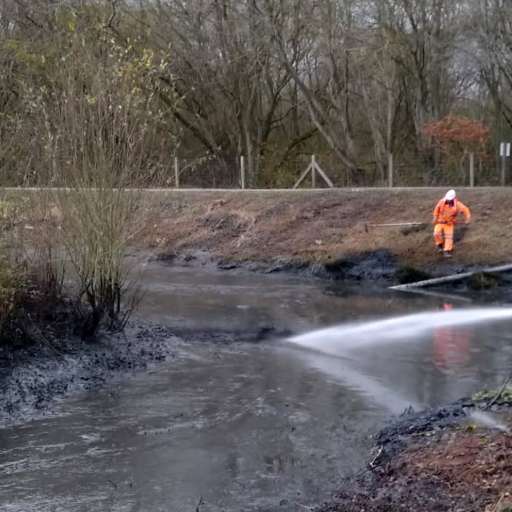
Pond dredging refers to a method involving the removal of sediments, debris, and organic matter deposited on the pond bottom. Restoration of good water quality and maintenance of equable aquatic habitats are associated with this treatment. If regular dredging is performed, it greatly reduces the chances of an algal bloom and keeps up with the ecological balance of the pond.
The Process of Dredging a Pond
In the course of dredging, several procedures are usually implemented to increase efficiency and effectiveness. First, during the pond dredging work, the water level in the pond is lowered, or in some cases, the pond is drained temporarily. Equipment such as dredgers or excavators is then used to remove the sediment and debris from the pond bed. Hydraulic dredging employs a suction pump to remove accumulated material, while mechanical dredging uses long-reach excavators to scoop sediment directly.
Aquatic studies have shown that sediments can accumulate in water bodies at a rate of 1-2 inches per year, depending on location and adjoining land-use pattern. Accumulation of sediments in the pond by just 5-6 inches drastically decreases water volume, oxygen level, and triggers harmful algal blooms, thus affecting aquatic life. By dredging, the pond shall be restored to its original depth and water-holding capacity, which is quintessential for the health of ecosystems.
Modern techniques such as sediment dewatering are enabling ponds to be dredged more sustainably. The dredged sediment, once dried, could be used for farming or landscaping, thereby reducing the waste output. For instance, nutrient-rich pond sediment is said to promote soil fertility and diminish the need for synthetic fertilizers. Within a year after dredging, rehabilitated ponds witness significant improvements in water clarity and biodiversity. These advancements thus provide a means to enhance pond utility while conserving the environment at the same time.
Benefits of Pond Dredging
Regular pond desludging offers many ecological, economic, and aesthetic benefits, thus ensuring its sustenance and viability in the long term. According to recent data, ponds accumulate organic matter over time, including leaves, algae, fish waste, and sediment. Left without maintenance, these might decompose further, negatively impacting water quality, lowering oxygen concentration, and increasing pathogenic activity. Some key points are given below:
Water Quality Enhancement
Regular desludging helps in removing excess organic materials that keep the water clear and balanced. Rehabilitated fresh waters showed a decrease in harmful concentrations of nutrients such as nitrogen and phosphorus by 40-50% that could otherwise result in algal blooms.
Improvement of Biodiversity
Maintenance of order finds the pond suitable for aquatic plants, insects, fishes, and birds, whereas removal of sludge which is harmful creates awfully bad anaerobic conditions for the living organisms. Studies indicate that within the first year post-rehabilitation, ponds show an increase in species diversity by 20-30%.
Preventing Fish Killings
Over accumulation of the sludge can affect the concentration of dissolved oxygen and cause fish to die during the warm months. Keeping maintenance regularly will ensure the concentration of dissolved oxygen is steady, hence supporting the thriving of fish populations.
Increasing the Pond’s Lifespan
Ponds clogged with sediments and organics lose capacity over time and tend to get flooded or overflow in heavy showers. Desilting increases water holding capacity and extends the functional life of a pond; at the same time, it makes it less liable to be expensive for upkeep.
Economic Benefits
Clearing sludge on a planned maintenance cycle is cheaper than treating problems such as sediment overflow or loss of fish population. While nutrient-enriched sludge also has the possibility of being recycled for agricultural purposes. Data indicates that dried pond sludge increases crop yield by 10-15%, thereby reducing the dependence on synthetic fertilizer when used as a soil amendment.
With the help of regular maintenance and desludging, pond owners can look forward to a well-balanced, efficient, and environmentally friendly water body serving all practical and ecological purposes for years.
Challenges in Pond Dredging
While dredging a pond certainly maintains the health and functionality of water, it comes replete with challenges that call for careful deliberation and management. One of the major hindrances towards going forth with this process lies in the cost. Data from 2014 suggest that depending upon variables such as sediment depth, types of equipment used, and complexity of site location, the cost of restoration services by dredging ranges between $20,000 and 60,000 per acre, thereby posing a heavy economic load and often discouraging the owners of small-scale water bodies from going into dredging.
Another important obstacle considers environmental implications. Sediment removal wreaks havoc on aquatic ecosystem if undertaken without consideration for time or manner. Studies indicate increases in turbidity as a consequence of inappropriate dredging, adversely affecting fish populations and plant growth. Disposal of dredged material is another critical problem. Current findings are of the opinion that something like 50-70% of sediment is found to have heavy metals or excess nutrients from ponds, which must be resolved or managed carefully to avoid any further damage to the environment.
In addition, logistical constraints such as equipment availability, regulatory permits, and accessibility to remote pond sites hamper or delay the dredging process. Standard practices now emphasize minimizing disruption to the greatest extent possible and maximizing sediment removal using environmentally friendly techniques and equipment such as suction dredgers. This will allow stakeholders to confront the above challenges effectively while contributing to ecological restoration in the long run.
Advancement in Technologies in Desludging
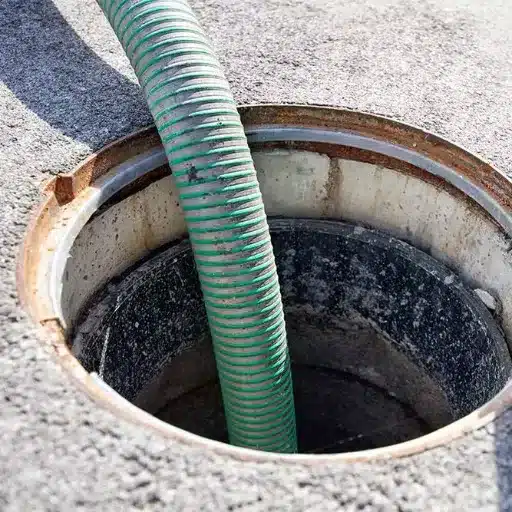
I consider that pond desludging problems such as permit regulations and access to remote sites can be managed well by applying eco-friendly techniques like suction dredgers. With a strong emphasis on sustainability and highly developed technology, we can indeed tackle these barriers safely for the environment.
Tools and Equipment
Being an era of technological improvement in land-based dredging technologies globally, many modern tools and equipment are now macro-engineered for ease of efficiency and ecological protection. One of the chief advancements includes the automated and GPS-guided suction dredgers that are used for precision removal of sludge from areas where there could be a disturbance to flora and fauna in the vicinity. Most types of dredgers are also equipped with systems of real-time monitoring that measure sediment levels and water quality to ensure that operations comply with environmentally friendly practices.
Other pros of polymeric flocculants are their ability to agglomerate sludge particles so that they can be easily removed and dewatered. Allegedly, recent industry data suggest that employing the newer types of flocculants can halve sludge volumes, thereby cutting transportation and disposal costs, as well as reducing the environmental footprint.
Then there are the hydraulic pumping systems which are enjoying popularity as energy-efficient systems depending on their capacity and the conditions of the water body. Such great tools can accomplish a project in such short periods that they actually save time and cash.
Coupled with modern equipment, such sustainability can do choice for the entire desludging operation-protecting aquatic ecosystems and meeting strict regulatory requirements.
Impact of Technology on Efficacy and Safety
Technology has transformed processes significantly in industry with regard to their efficiency and safety, specially considering dredging operations. Operating systems with maximum automation and intelligence are minimizing the need for human intervention, human errors, and incidents in the workplace. For example: IoT-sensors monitor in real time equipment performance and environmental condition-they send data to the operator, who has accordingly better ground for decisions and can therefore optimize.
Automated desludging means result in upgrading by up to 30% of efficiency, shortening the duration of projects and thereby reducing labor cost, says recent studies. AI-powered predictive maintenance minimizes equipment down-time. Safety is enhanced thanks to remote-controlled machinery operated away further from era of the exposure to harm.
Sustainable technological solutions continue to come into focus around hybrid-powered dredging systems that are geared toward cutting carbon emissions while still delivering high output. The manufacturers have confirmed that the deployment of these energy-efficient tools has resulted in a cut of at least 25% of greenhouse gas emissions. These inventions demonstrate that technology is advancing toward safer and environmentally responsible ways of operating in various industries.
Future Trends in Desludging Technology
The future of desludging technologies is increasingly centered on automation, data integration, and sustainability. Advanced sensors and AI-driven controls are brought into automated desludging systems allowing operators to monitor real-time conditions remotely and precisely make adjustments. According to the latest insights from the industry, 40% of newly manufactured desludging machinery relies on IoT-based technologies that improve efficiency and minimize downtime for operations.
Sustainability would remain the key factor driving the next-generation technologies down toward reducing the water-dredging system’s environmental impact. The market worldwide of environmentally supportive desludging technique is expected to register a CAGR of 6.5 percent during 2023-2030. Currently, this trend is favored by stringent government regulations and rising industry commitments toward net-zero emissions.
Additionally, renewable energy sources and hybrid power systems are being employed by companies to carve the next step in energy-saving implementation for the desludging process. Integration of solar power with dredging units yields fairly promising results with an estimated 30% reduction energy cost, for instance. These developments underline the sure trajectory of smarter, greener, and adaptive desludging technologies.
Reference sources
1. Evaluation of psychosocial factors affecting faecal sludge desludging practice compliance in Bekasi City
- Authors: Dyah Wulandari Putri, Josephine Amadea
- Published in: E3S Web of Conferences, 2024
- Summary: This study investigates the compliance of desludging practices with safe sanitation principles and regulations in Bekasi City. It identifies psychosocial factors affecting the practices of 32 desludging operators using the Theoretical Domains Framework (TDF). The findings reveal that only 56% of operators comply with desludging procedures, and 84% discharge faecal sludge to treatment plants. Significant factors influencing compliance include knowledge, beliefs about consequences, and environmental context.
- Methodology: A questionnaire based on TDF was administered to assess desludging practices and psychosocial factors. Spearman’s Rank Correlation analysis was used to identify significant domains affecting compliance(Putri & Amadea, 2024).
2. Impacts of scheduled desludging on quality of water and wastewater in Wai city, India
- Authors: Jigisha Jaiswal, D. Mehta, M. Mehta
- Published in: Environment and Planning B: Urban Analytics and City Science, 2022
- Summary: This paper discusses the implementation of scheduled desludging in Wai, India, and its positive impact on water quality. The study shows that regular desludging improves the performance of septic tanks and enhances the quality of groundwater, river water, and effluent from drains.
- Methodology: The study involved monitoring water quality before and after scheduled desludging, assessing groundwater, river water, and effluent quality. The results indicate a clear link between scheduled desludging and improved water quality(Jaiswal et al., 2022, pp. 2216–2229).
3. The Mandatory 4 Years Desludging Frequency of Underground Septic Tanks in Residential Areas: A Case Study in Sibu Sarawak, East Malaysia
- Authors: Wen Kam Leong et al.
- Published in: Journal of the Civil Engineering Forum, 2022
- Summary: This study evaluates the effectiveness of the mandatory four-year desludging frequency for septic tanks in Sibu. It suggests that the current frequency may be adjusted based on the actual sludge accumulation rates, proposing longer intervals for cost-effectiveness.
- Methodology: The study quantitatively assessed the sludge volume in septic tanks and compared it with the regulated desludging frequency. A modified PVC pipe was used for accurate measurement, and back analysis was conducted to recommend desludging frequencies(Leong et al., 2022).
Frequently Asked Questions (FAQs)
What is desludging and why is it important?
In general, desludging is the removal of settling sludge from tanks or any containment systems. It is important for making sure the wastewater treatment systems, in primary septic tanks and lagoons, work efficiently. The removal of this sludge against settling of unwanted solids enhances the longevity of these systems.
How does desludging affect a primary septic tank?
In primary septic tanks, desludging is an important process for termites to remove the accumulated sludge that hamper the workings of treatment. It promotes the regular desludging of septic tanks so that the proper flow is maintained and so that the risk of blockages is reduced, consequently improving the efficiency of the complete septic system.
What are desludging bags and how are they used?
Desludging bags, also called geobags or geotextile containers, are large bags used during the desludging of sludge to collect and contain the material. These bags streamline the management of contaminated sediments such that safe transport and final disposal of the sludge do not contaminate the surrounding environment.
What particular role do oil and fats play in sludge accumulation?
Oil and fats contribute largely to sludge accumulation in wastewater treatment systems. When these substances settle, they develop a thick layer of sludge that necessitates desludging to ensure the systems remain functional and environmental safety is maintained.
How does desludging improve environmental remediation?
Desludging is a very important environmental remediation process as it removes polluted materials from industrial run-offs and other sources. This clean-up of waterways thereby reduces the impact of pollutants on the ecosystem, hence greatly enhancing the environmental quality.
How does the desludging process happen in a lagoon?
Desludging a lagoon refers to the process whereby specialized equipment is used to pump out the accumulated sludge and silt. The procedure requires that access lids be opened to allow the removal of sediments, thus ensuring that the lagoon is prevented from being unsafe and nonfunctional.
Mining and mineral processing and the activities of desludging?
Desludging is a means to an end in mining and mineral processing in the sense of heap leach and other operations. By the elimination of surplus sludge, the companies have improved application for pumping water as well as recovery of valuable minerals while lessening their environmental concern.
What are the advantages of using soil tubes for desludging?
Soil tubes not only provides a very effective means of unloading sediment from different containment systems but also accomplishes that with the controlled removal and transportation of sludge so that any untoward interference to the neighboring site does not occur thus making the system an environmental solution.

